It’s quite simple to connect a solar power system to an existing utility-connected building in Alberta, but you still need a solid design and installation plan, as well as an expectation of how your system is going to perform, technically and financially, and on the short term and long term. A solar site assessment is critical for you to be able to properly design a solar power system and to produce an expectation for its future performance.
What’s in a solar site assessment?
As with any trade, conducting a site assessment is needed to go from an estimate to a detailed and final quote. Installers can make conservative assumptions of site specific parameters such as cable runs, installation hours, structural integrity, and so on, and may end up over-pricing, or performing poorly in general.
Your intentions
First of all it’s important that the installation company appreciates why it is you are going solar. What are your expectations? What do you want to get out of the investment? Often times, decisions turn out to be more than just about getting the lowest installation or levelized cost (the ratio of how much you are spending over the amount of energy being produced). With a grid-tie solar power system the decision of how much solar to install is up to you. If the budget is limited, if the amount of viable roof space doesn’t really reflect the amount of energy your property consumes, if you have a preference for a certain product or look – no problem.
On the roof
The direction and tilt of a roof determines the amount of insolation it will receive minus any shading by nearby objects. Below is a photo showing the shadow cast on an array from a chimney during noon of the winter solstice. To do this we first of all need a careful survey of the roof and its components. Do you install the panels somewhere else? Will the shaded panels affect other panels? Can we completely avoid the shaded areas? What does shading look like on other roofs? Can the losses in shading be covered through economies of installing more panels?
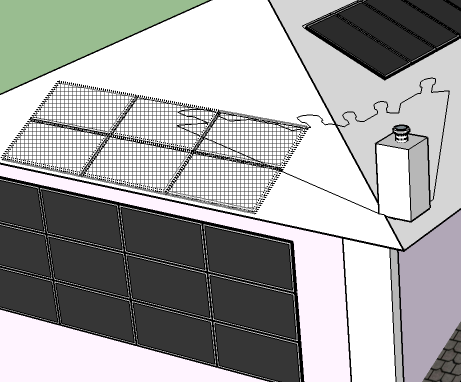
A shading analysis can identify the shaded areas of the roof and quantify the losses in energy production
We also use a Solar Pathfinder to get a more accurate idea of where and how much energy loss is incurred by shading:
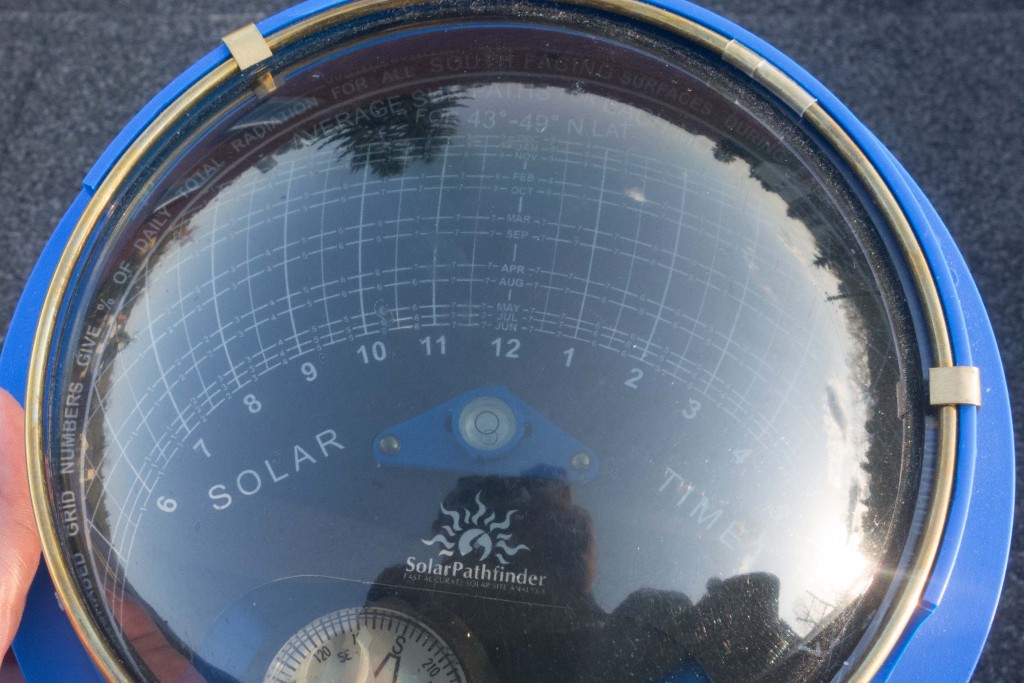
Solar Path Finder identifies where and when shading impacts a potentially viable installation space
Inside the building
The installation can take as much time inside a building in installing inverters and running cables as it can on the roof. Electricians have to identify how they are going to run the cable back to the panel or the electrical room. They also have to determine the kind of cable, size of conductors, breakers, fuses, disconnects, and so on. Installers have to determine the number and position of the bolts that are going to hold the arrays in place.
Your options
Selecting a final system design can be an iterative process as you try to balance competing technical (e.g. largest capacity, backup power capability), financial (e.g., staying within a budget) and aesthetic(eg.”I like the window look”) and even tertiary goals (e.g. “It’s going to make the garage a lot cooler in the summer.”) of your new investment. Allow your installer to guide you through the options your family or business are contemplating.
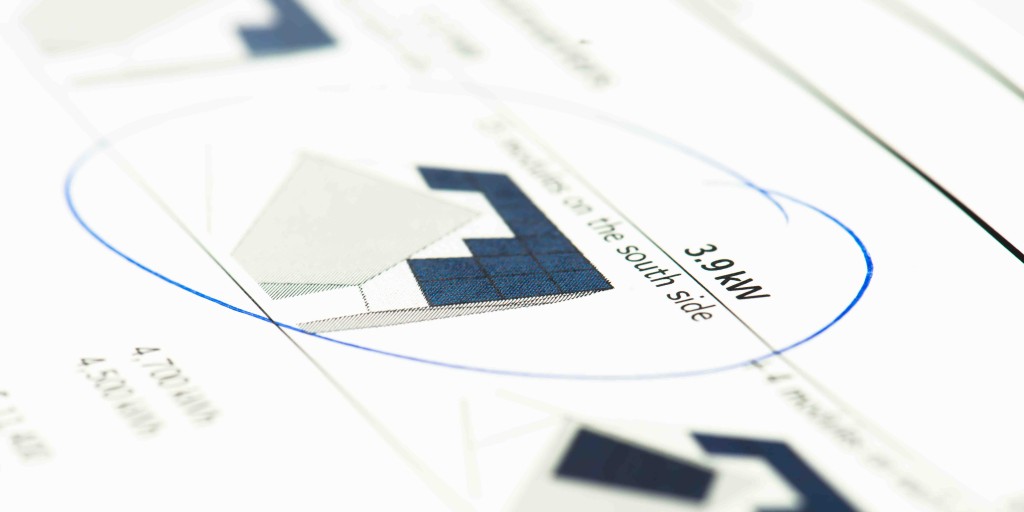
Careful site assessments can provide you with options and recommendations matching your capability and expectations.
After the solar site assessment
One of our clients was initially interested in installing panels on their wall as awnings at an optimal pitch to maximize energy production. Once we sketched it out for them they realized how protruding the array may seem to their neighbours, and decided instead to mount them flushed to the wall which gave it a window look instead:
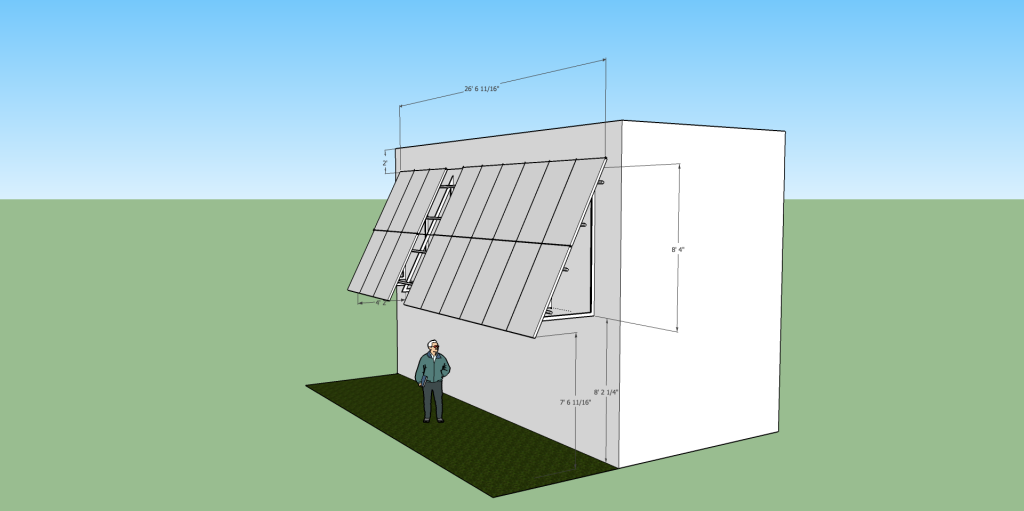
Awnings sketched out for a client before they realized it just wasn’t the right setup for their wall and went for a flush mounted wall array instead.
We considered using string inverters at first because of their lower installation costs and higher efficiency. String inverters can process several strings of panels even if they are not facing the same direction, provided the strings are the same size (ie. same number of panels connected in series). We sketched out all possible suitable combinations for the client to consider.
[block_grid type=”three-up”] [block_grid_item]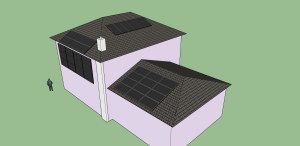 [/block_grid_item] [block_grid_item]
[/block_grid_item] [block_grid_item] 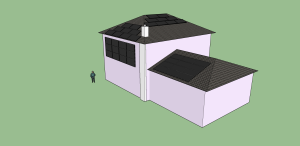 [/block_grid_item] [block_grid_item]
[/block_grid_item] [block_grid_item]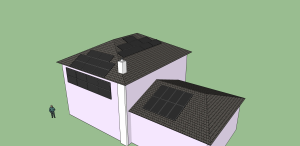 [/block_grid_item] [/block_grid]
[/block_grid_item] [/block_grid]
As you can see conducting a careful and thorough site assessment can provide you an accurate price and expectation for your solar power system. It will allow you to get a detailed analysis of your system’s expected production and savings that come with it. And of course it will also make the installation a lot quicker and smoother and without any surprises. Please complete the form below, or send us an email if you are interested in getting an assessment completed on your property.
—
Our site assessments are complementary and completed around your earliest convenience. Please fill out the form below and one of our project managers will get in touch to confirm an appointment.
